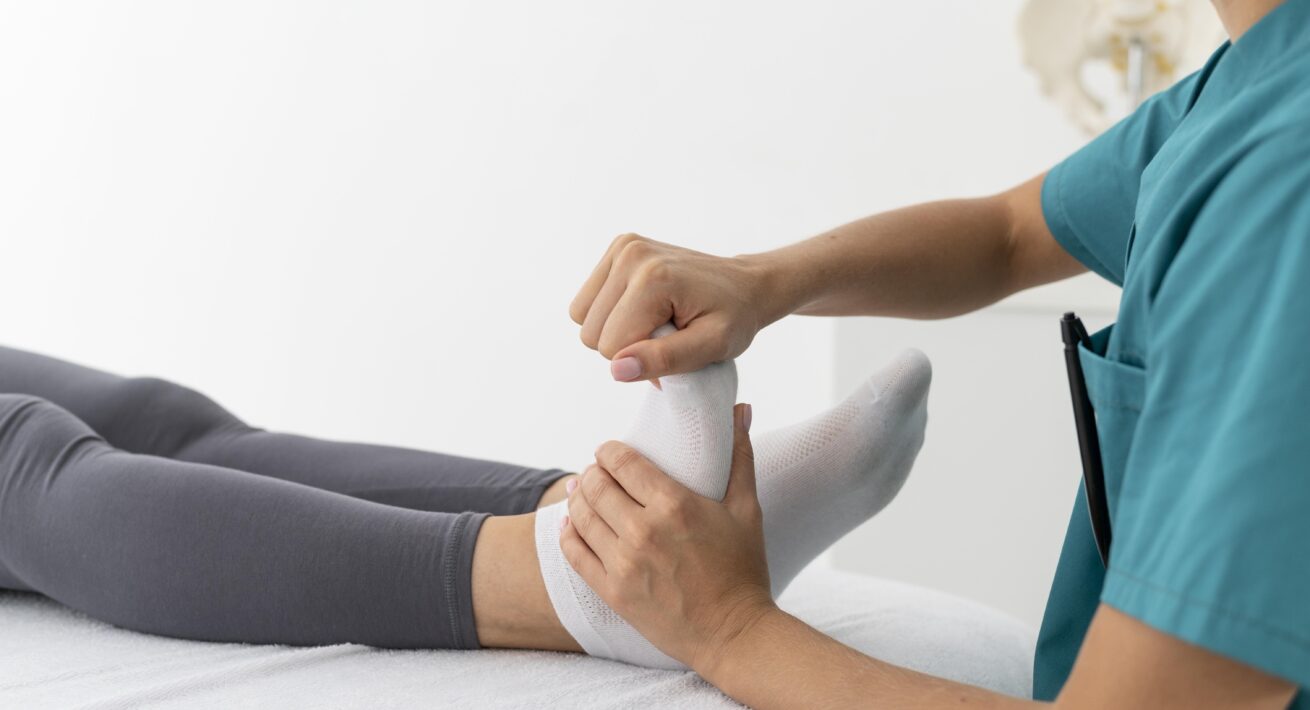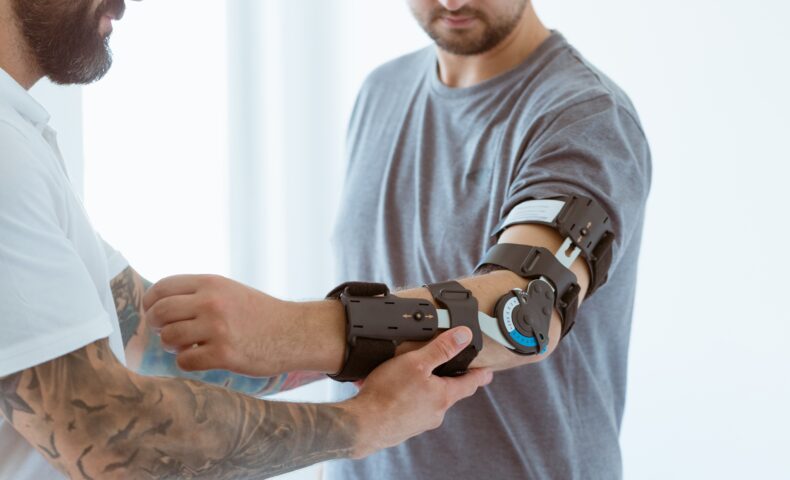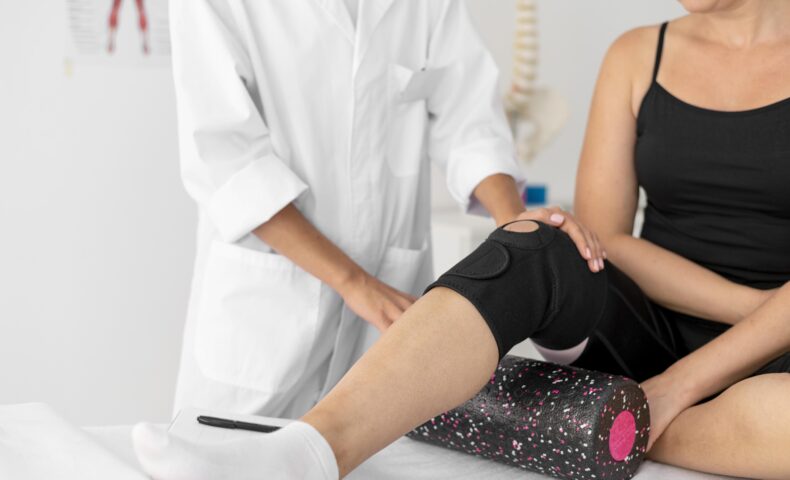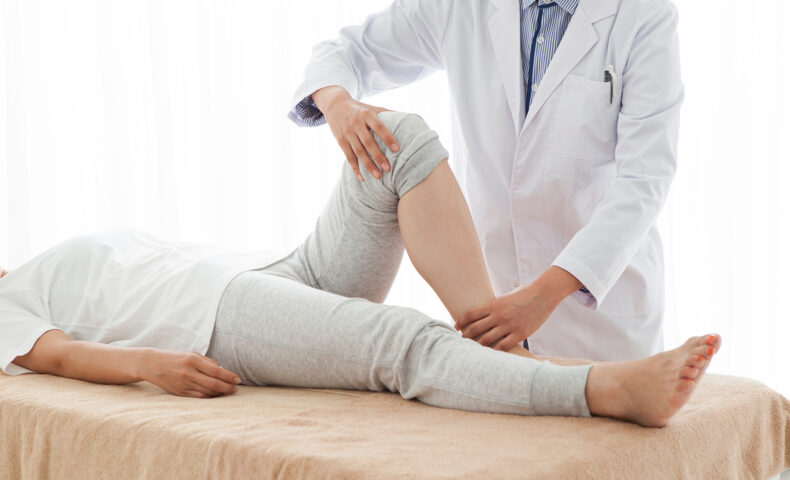Choosing the right size of compression stockings is crucial to their effectiveness and patient comfort. Inadequate sizing can compromise the pressure required to stimulate venous return, and therefore limit the expected benefits. Thanks to technological advances, healthcare professionals can now rely on mobile 3D scanning solutions, like the one from MyFit Solutions, to obtain precise leg measurements directly via smartphone. This quick and easy process allows us to recommend the ideal size, adapted to individual needs, thus reducing the risk of discomfort and returns linked to poor fit.
What are compression stockings?
Compression stockings are medical devices designed to support blood circulation in the legs. This is called “degressive pressure”: maximum pressure is applied at the ankle, gradually decreasing towards the top of the leg. This controlled pressure helps blood to flow back to the heart. It also prevents stagnation in the lower limbs, often the cause of swelling, pain and other venous complications.
When and why wear compression stockings?
Compression stockings play an essential role in the management and prevention of various venous disorders. Health professionals recommend them for specific medical reasons. Their use helps stimulate venous return and prevent circulatory complications. Here are some typical indications for which compression stockings are particularly useful.
- Prevention of venous disorders and day-to-day relief
Compression stockings are effective in relieving symptoms of heavy legs and reducing the discomfort associated with prolonged standing or sitting. This is often the case for people with sedentary or standing jobs. They also help prevent the development of varicose veins by improving venous circulation.
- Post-operative care
In a post-operative context, compression stockings are often prescribed to prevent thromboembolic complications. After surgery, there is a risk of blood clots (venous thrombosis) due to reduced mobility. Compression stockings help reduce this risk by facilitating the return of blood to the heart.
- Preventing the risks of long journeys
During long journeys by plane, train or car, prolonged immobility increases the risk of deep-vein thrombosis (DVT). As well asedema in the lower limbs. Wearing compression stockings is recommended to prevent these risks, by maintaining graduated pressure on the veins. This promotes blood circulation despite immobility.
- Muscle recovery support for athletes
When it comes to sports activities, compression stockings are used to promote recovery after exercise. By exerting moderate, graduated pressure, they improve blood return and reduce the build-up of toxins in the muscles. This helps minimize post-exertion muscle soreness and pain.
What’s the difference between contention and compression?
Although the terms “contention” and “compression” are often used interchangeably, they have important nuances:
| Criteria | Compression | Contention |
| Main purpose | Designed to improve blood circulation and reduce swelling. Pressure is graduated to promote venous return, with greater pressure at the ankle and decreasing pressure towards the top. | Aims to immobilize or restrict movement in a specific area, often used to stabilize an injury or after surgery. |
| Pressure | Exerts graduated pressure, stronger in certain areas to optimize venous return. | Applies constant, strong, localized pressure to immobilize the targeted area. |
| Champ d’application | Mainly used for venous disorders such as varicose veins and swelling, as well as for sports recovery. | Used to treat wounds and for immobilization after surgery |
| Examples | Includes compression stockings and compression garments for athletes. | Includes bandages, splints and orthotics. |
So, although both terms refer to pressure devices, their use and mechanism differ according to medical needs.
Offering the right size of compression stockings
Choosing the right size of compression stockings is essential to guarantee their effectiveness and avoid discomfort. Incorrect sizing can make stockings ineffective or even uncomfortable, and interfere with treatment. Here’s how to make sure your compression stockings fit properly and meet your needs.
How do I know if my compression stockings are the right size?
To determine whether your compression stockings fit properly, a number of criteria need to be taken into account. In particular, the pressure exerted and the fit at different points on the leg. Here are the signs of a good fit:
- Pressure: compression stockings are designed to exert graduated pressure. With maximum pressure at the ankle, gradually decreasing towards the knee and thigh. This gradation is crucial for stimulating venous return.
- Fit: stockings must fit snugly, without creating creases or uncomfortable areas. Stockings that are too tight can cause marks or pain. On the other hand, stockings that are too loose can slip off and fail to perform their function.
There are several classes of compression (e.g. class 1, class 2), each corresponding to a particular pressure level:
- Class 1 (light pressure 10-15 mmHg): generally recommended for the first signs of venous disorders or for prevention.
- Class 2 (moderate pressure 15-20 mmHg): suitable for more pronounced venous disorders, such as varicose veins or edema.
- Class 3 (high pressure: 20-36 mmHg): Recommended for severe venous insufficiency, severe edema and prevention of venous ulcers.
- Class 4 (very high pressure: over 36 mmHg): Used only for specific cases of severe lymphedema or in situations requiring very high compression.
What measurements should I take for compression stockings?
To ensure that compression stockings fit properly, it’s essential to take precise measurements of the leg. Here are some of the measurements we can identify as necessary:
- Ankle circumference: just above the ankle bone to determine the point of maximum pressure.
- Calf circumference : at the widest point of the calf.
- Thigh circumference : about 5 cm below the groin for thigh-high stockings.
- Leg length: from heel to knee for mid-thigh stockings or support socks. To the groin for stockings up to the top of the leg.
These measurements guarantee that compression stockings will adapt perfectly to the morphology of the patient’s leg. And that they exert the right pressure in the right places. It is advisable to repeat the measurements regularly. Changes in leg shape or condition can affect the fit.
Using cell phones to take 3D leg measurements
How to scan legs with a cell phone?
The process of 3D leg scanning with a cell phone is quick and easy. With MyFit Solutions, get 3D leg measurements in no time at all:
Download the MyFit Solutions 3D scanning application
The first step in performing a 3D scan of the legs is to download a dedicated application, available on theApp Store or Play Store. At MyFit Solutions, we offer several options to suit your needs. You can use our ready-to-use application: My3D Scanner. If you’re working with us as part of a white-label solution, or via the integration of our SDK, your customized app will also be available on the stores…
Preparing the environment
Make sure the lighting is sufficient and even to avoid shadowy areas that could impair scan quality. Avoid backlighting and reflective elements such as mirrors. The subject must be upright, motionless and in the right position for the job.
Scanning the legs
Once the application is installed and the subject ready, simply launch the application and follow the instructions. The scan is performed using the phone’s rear camera, which captures a series of photos.
Analyze results
The images are then processed in real time using photogrammetry to generate a precise 3D model of the legs and the associated 3D measurements.
Thanks to the 3D technology developed by MyFit Solutions, healthcare professionals and patients can benefit from a solution anywhere, anytime.
Recommend the right compression stocking size
Thanks to the precise measurements provided by mobile 3D scanning, it’s easier to recommend the right size of compression stocking. Based on the specific dimensions of the ankle, calf and thigh, it is possible to :
- Personalize sizing: by providing precise recommendations for a standard size. Or by proposing a made-to-measure solution if required.
- Optimize comfort and efficiency: a precise fit ensures that compression stockings exert the correct downward pressure. This ensures optimal blood circulation and effective symptom relief.
- Reduce return rates: more returns from your patients! The right size is sent the first time.
Thus, using mobile 3D scanning technology enables healthcare professionals and users themselves to be assured that the recommended size is the most suitable to meet the specific needs of each leg. It is also possible to create 100% made-to-measure products thanks to 3D leg scanning.







